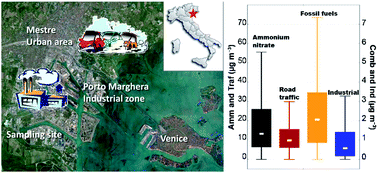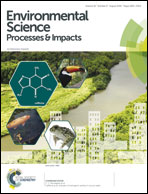The PM2.5 chemical composition in an industrial zone included in a large urban settlement: main sources and local background†
Abstract
Chemical analyses, receptor modeling and meteorological data were combined to determine the composition and sources of PM2.5 sampled daily in a large area in Italy characterized by a high number of heterogeneous industrial emissions and contiguous to a major urban center. The PM2.5 local background in the area, i.e. the common basic composition and concentrations of PM2.5, was determined. Factor analysis-multiple linear regression analysis (FA-MLRA) was used to identify and quantify the main PM sources. Groups of samples with similar source contributions were then sorted using cluster analysis. The potential source location and the influence of long range transport were investigated by using the conditional probability function (CPF) and the potential source contribution function (PSCF) respectively. On an annual basis, five sources of PM were found relevant. Industrial emissions accounted for 3% of PM mass, whereas the main contribution to PM was related to a combination of ammonium nitrate, combustion (54%) and road traffic (36%), mainly related to urban emissions. The PM2.5 background was estimated to account for 20 μg m−3. It comprises contributions of 55% ammonium nitrate and combustion, 46% road traffic, 6% fossil fuel combustion and 3% industrial emissions. Source contributions are influenced by both local atmospheric circulation and regional transport.


 Please wait while we load your content...
Please wait while we load your content...